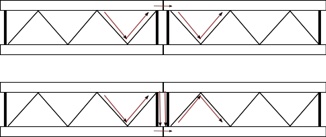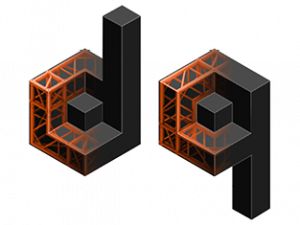A question that comes up regularly is if, when connecting truss together, the diagonal bracing should form continuous triangles as seen below?

And never like this?

The answer to that question is, not necessarily. From an aesthetic standpoint it might be ideal that the diagonal bracing would be continuous to maintain triangulation but it is not always possible with the various lengths and designs of truss that are available. The theory comes from the fact that some truss types did not (and still do not) have any bracing at the end. Therefore, if the diagonal braces are not continuous, a parallelogram is created at the junction, rather than a triangle, which has no inherent strength. This can be seen in the diagram below. We can see that there is no triangle at the connection which makes it a weak point of the truss.

However, most modern truss is designed with a vertical brace at the end of each piece, which creates a triangle with the diagonal bracing to give you that triangulation in the connection area. The triangles are separated by a small rectangle at the connection point. The rectangle at the junction then becomes the weak point but this is compensated by the fact that the connection is designed to make that area as small as possible, and the connection systems are as rigid as possible.. This rigid connection allows the forces in the bracing to transfer through the connection point and continue in the bracing regardless of the orientation of the truss. Aluminium has equal strength in either tension or compression and as such the direction that the forces apply has no bearing on the capacity.

Due to the rigidity and limited size of the connection section the strength of the truss is typically limited by deflection of the truss rather than the strength of that connection. This has been verified by our engineers who have confirmed that there is no significant difference in loading capacity in either orientation.

